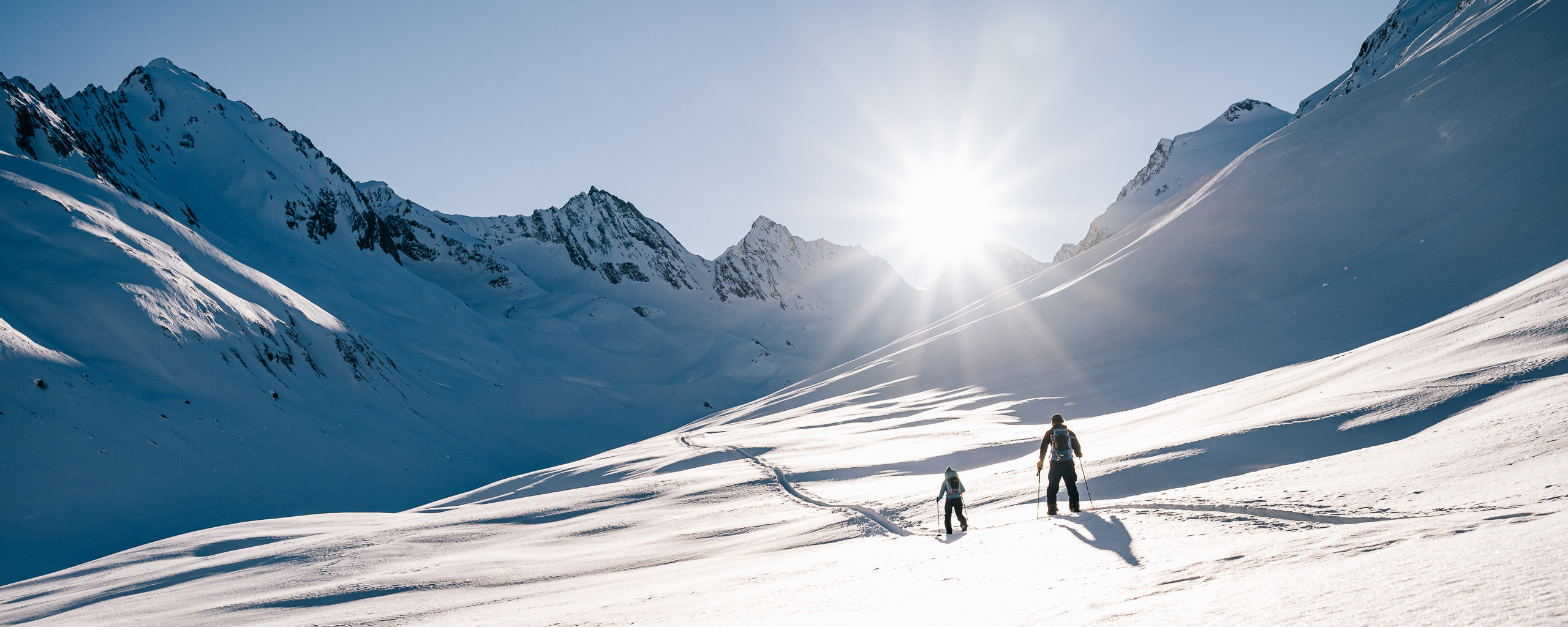Pro-Tips: 5 steps to plan your skitour

Planning a ski tour, especially when you are approaching the backcountry for the first time, may seem like a overwhelming list of tasks, decisions to make and things to remember. But with time and experience, this will get one of your most consolidated routines and it will allow you to pick the best lines, score the best snow and always keep it as safe as possible. This blog is meant to serve you as a step-by-step guide so you can plan your tour properly.
Here are my 5 steps for a good tour preparation:
1. Conditions check
Everything starts the evening before with the updated avalanche report published on Lawinen.report. This is a mandatory first step, as you get a first impression on what to expect out in the mountains: What elevations and aspects should be avoided and what avalanche conditions I might be facing. Remember: every mountain is safe and unsafe in certain times and sometimes it is just too dangerous for touring. The weather up in the high alpine is completely different than down in the valley and – if you’ve spent the whole day in town – the report could deliver some surprises. Trading my touring motivation for a chilled day on the groomers and waiting for safer days to access the backcountry can be a smarter choice from times.

2. Location choice
Together with slashing turns, this is probably the most exciting part for me: at the end of a good day it is indeed fulfilling knowing you have made the right choice. Besides bringing the most excitement, it also requires a bit of time, experience and patience: it is all about going back and forth from weather forecast, avalanche report and maps to find the best location and – at the same time – playing it safe. I recommend everyone to not just stop in front of the most common option, but to explore a bit more. It doesn’t take much to find interesting, new and less crowded areas. Once I made the decision what type of terrain i´d like to ride, I use the 3D maps of FATMAP for narrowing down my decisions on particular runs. The last part of this procedure – probably the most important – is to share your plan with your group and discuss the plan before starting the tour. Every member of the group should be involved in the plan and know where you will be going, so they could guide rescue teams to your location in case of an emergency.
3. Gear checklist
Prepare your individual checklist. What gear do you need for the tour, what extra equipment/tools/necessities do you personally need? I always get my gear ready the evening before, so I don’t have to rush in the morning. Besides the normal gear such as skis, poles, skins, transceiver, shovel, probe and so on, I highly recommend every one to have a first aid kit which doesn’t include only medical supplies & bandages, but also spare batteries for your transceiver, a bivy bag, duct tape and everything else that could help you in case of emergency.
4. Morning check
Everything looks planned and you are ready to go. Yet, it´s a good idea to double check everything. I always check the avalanche report for updates and revise the plan with a fresh brain while enjoying my mandatory coffee – it’s not to late for changing your mind yet: flexibility is key! Once your all set with your group, revise the plan again. Check how everyone is feeling, if the have additional thoughts and if everyone has the gear needed to finish the tour. Also check all transceivers and safety gear for functionality.
5. Have fun!
You are out in the terrain now, time to enjoy the result of your perfect planning! Do not forget to go through the safety checks with your mates and always keep your eyes open!
Written By:
Francesco Drago
Professional Skibum & Marketing Consultant
Francesco is a professional skibum. After finishing his master studies in management, the young Italian moved to to the beautiful Stubai valley in tyrol where he works as a independent marketing consultant for various brands within the sport industry. Born and raised in Genoa, Francesco felt home on the water sailing and kitesurfing, while his passion for the outdoors got him into biking and skiing.









